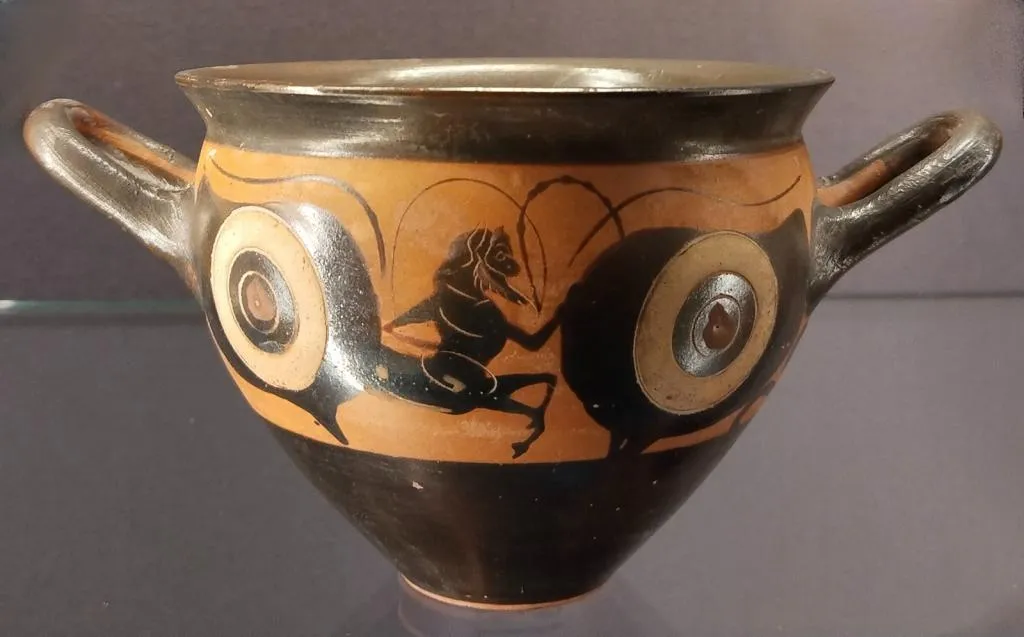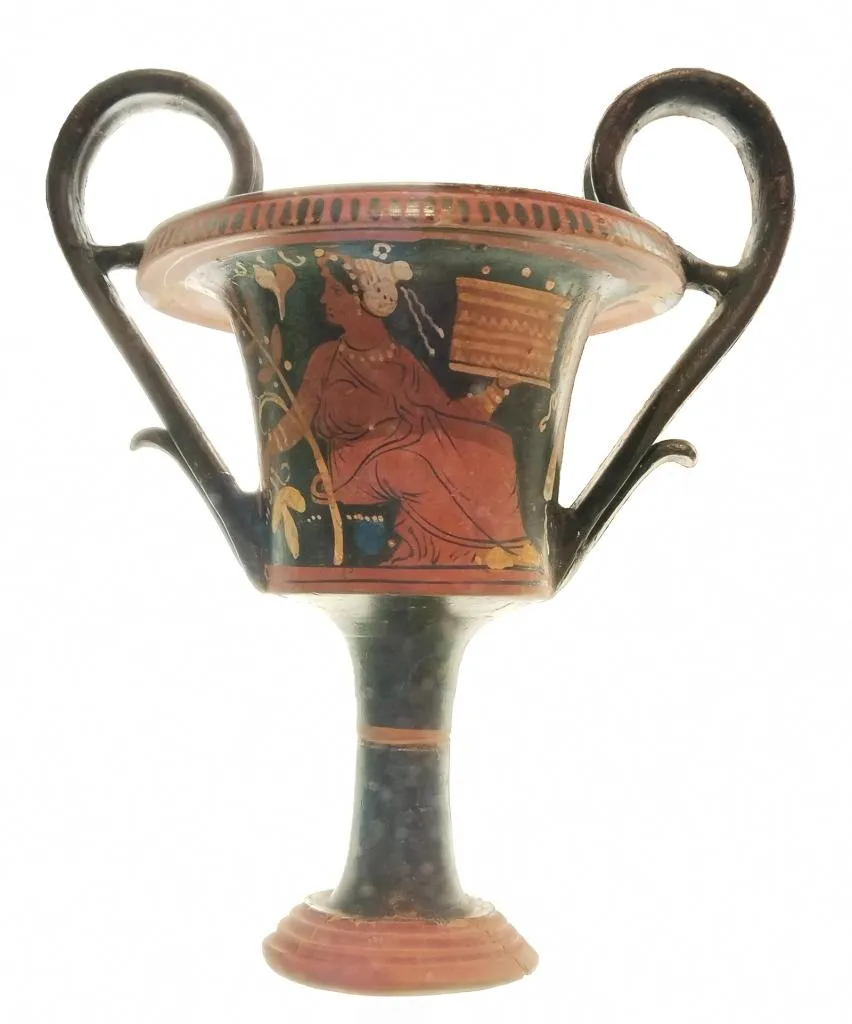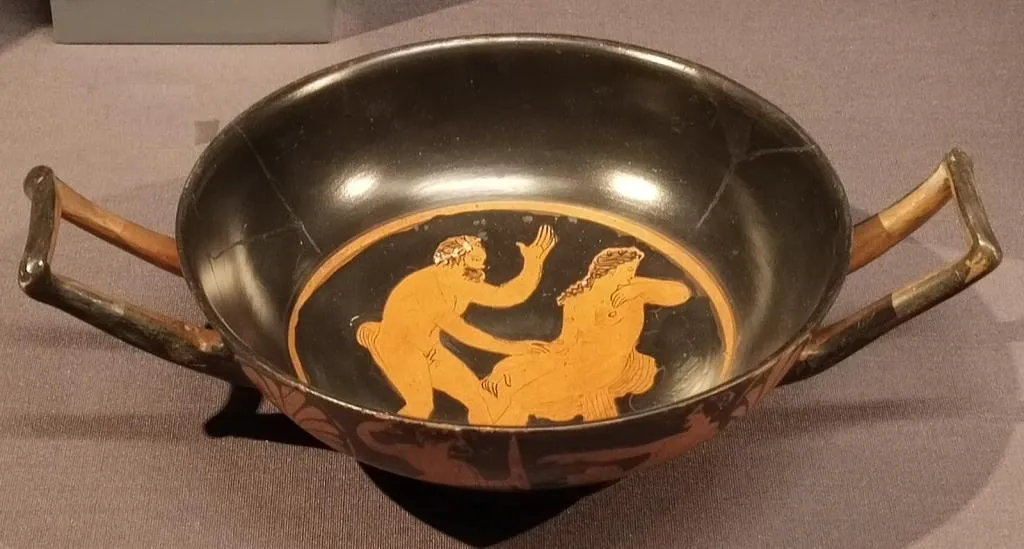Rhyton
The rhyton is one of antiquity’s most curious and captivating drinking vessels. It straddles the line between art and function—equal parts ceremonial object and expressive sculpture.
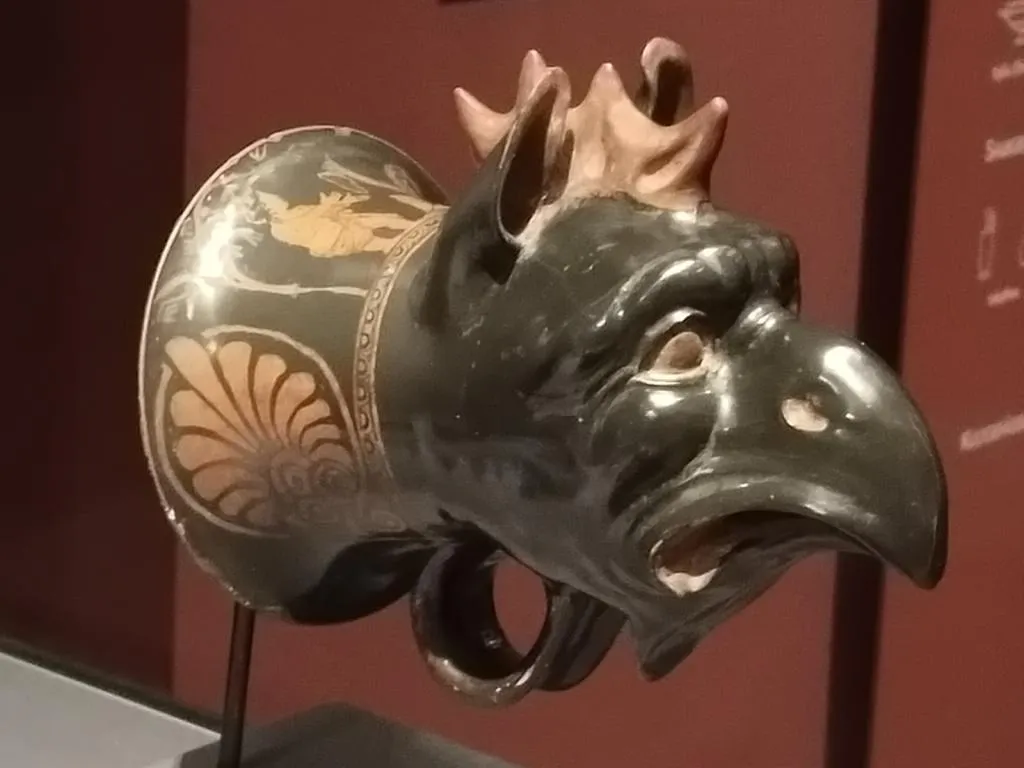
Source: by Stable MARK - own work.
The ancient rhyton—shaped like animal heads and used in sacred rituals across Greece, Persia, and beyond. More than just a cup, it symbolized life, power, and the divine flow of offerings.
Table of Contents
What Is a Rhyton?What Was the Purpose of a Rhyton?What’s the Meaning of “Rhyton” (Etymology)?What Does a Rhyton Symbolize?Which Cultures Made Rhytons?Are There Different Types of Rhytons?What Materials Were Rhytons Made Of?What Are Famous Examples of Rhytons?What Is “Rhyton” in Ancient Greek (Spelling/Pronunciation)?What’s the Plural of “Rhyton”? Is It “Rhyta”?Is “Rython” Just a Variant or Misspelling of “Rhyton”?What Do You Call the Traditional Drinking Vessel Shaped Like an Animal or Human Head?What Was the Bull’s-Head Rhyton, and How Was It Probably Used?What Is a Rhyton?
A rhyton is an ancient ceremonial drinking or pouring vessel, typically shaped like an animal’s head or horn. Used in rituals, feasts, and libations, it often featured one opening at the top for filling and another at the bottom or mouth for pouring. Rhytons were not just practical objects—they held religious and symbolic meaning, playing a key role in offerings to gods or honoring the dead.
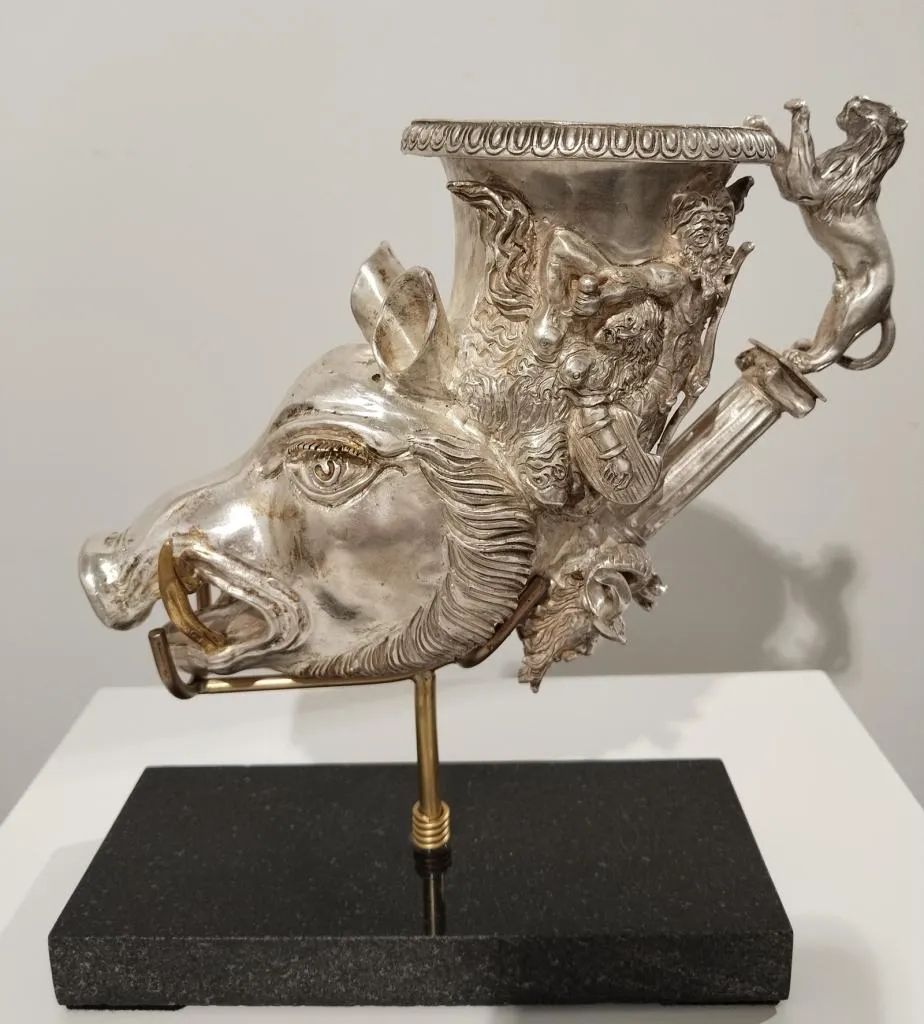
Source: by Stable MARK - own work.
What Was the Purpose of a Rhyton?
Rhytons were used primarily for drinking or pouring liquids—most often wine, water, oil, or blood—during ceremonies, libations, and banquets. Some functioned as cups, while others acted more like funnels or strainers, allowing fluid to pour from a hole at the bottom.

Source: by Stable MARK - own work.
What’s the Meaning of “Rhyton” (Etymology)?
The word rhyton (ῥυτόν) comes from the Ancient Greek verb rhein (ῥεῖν), meaning “to flow.” According to ancient sources, it was named apo tēs rhyseōs—“from the flowing.”
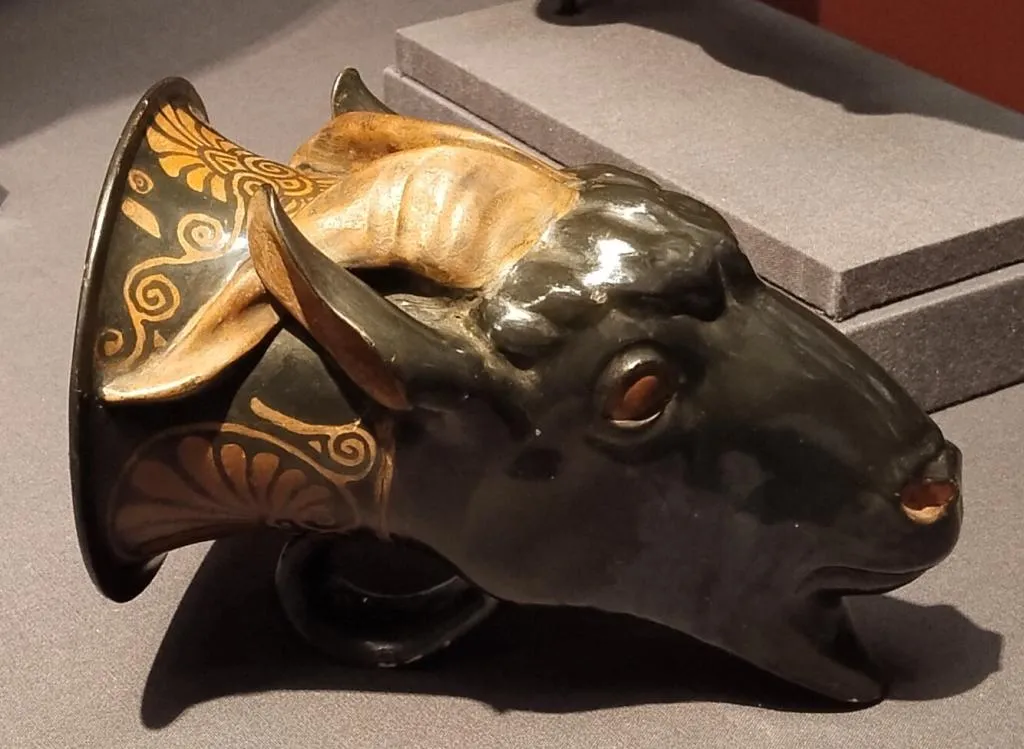
Source: by Stable MARK - own work.
What Does a Rhyton Symbolize?
The rhyton often symbolized abundance, sacrifice, and life-force—particularly when used in wine rituals or animal sacrifices. In Greek art, they appear in mythological contexts, especially in scenes featuring satyrs, Dionysus, and festive revelry. In royal or religious settings, the ornate and animal-shaped rhyta also expressed power, divine connection, and cultural identity.
Which Cultures Made Rhytons?
Rhytons weren’t exclusive to the Greeks. These vessels were found across ancient Eurasia, especially from Persia to the Balkans. Key cultures that produced rhytons include:
- Ancient Persia (where they were called takuk)
- Minoan Crete
- Hellenistic Greece
- Thracians and Phrygians
- Elamites (modern Iran)
- Anatolian cultures
- Romans (later imitating Greek models)
- Even in Chinese archaeology, rhyton-like vessels appear
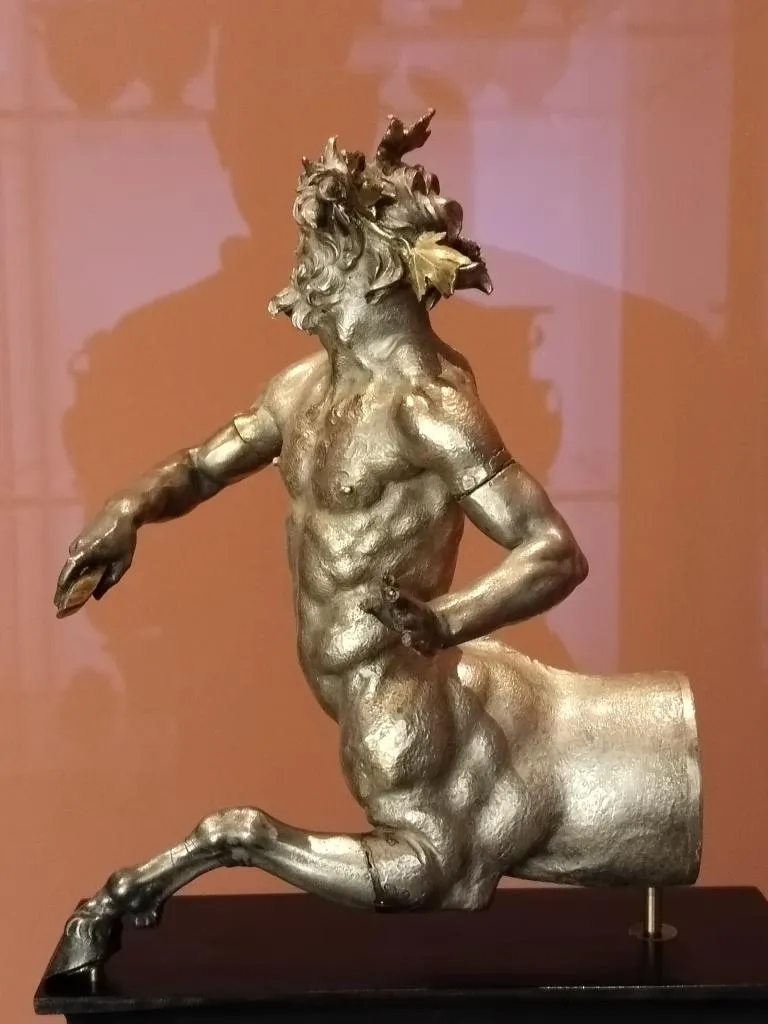
Source: by Stable MARK - own work.
Are There Different Types of Rhytons?
Yes—rhytons came in several shapes and designs, often falling into two major categories:
- 1. Animal-Head Rhytons – often shaped like a bull, goat, lion, boar, or mythical beast, with the liquid exiting the mouth.
- 2. Horn-Shaped Rhytons – resembling a drinking horn (keras), sometimes terminating in animal heads or bodies.
Some had upright shapes, requiring two hands or teamwork to use. Others were horizontal, filled by submersion.
What Materials Were Rhytons Made Of?
Rhytons were crafted from a variety of materials depending on their purpose and the status of the owner:
- Ceramic (Terracotta) – common, often painted in red- or black-figure technique
- Silver – prized in elite and royal settings
- Gold – used for high-status libations or symbolic display
- Bronze
- Ivory and bone
- Stone (like alabaster or serpentine)
Many were richly decorated, and some were partially or fully gilded.
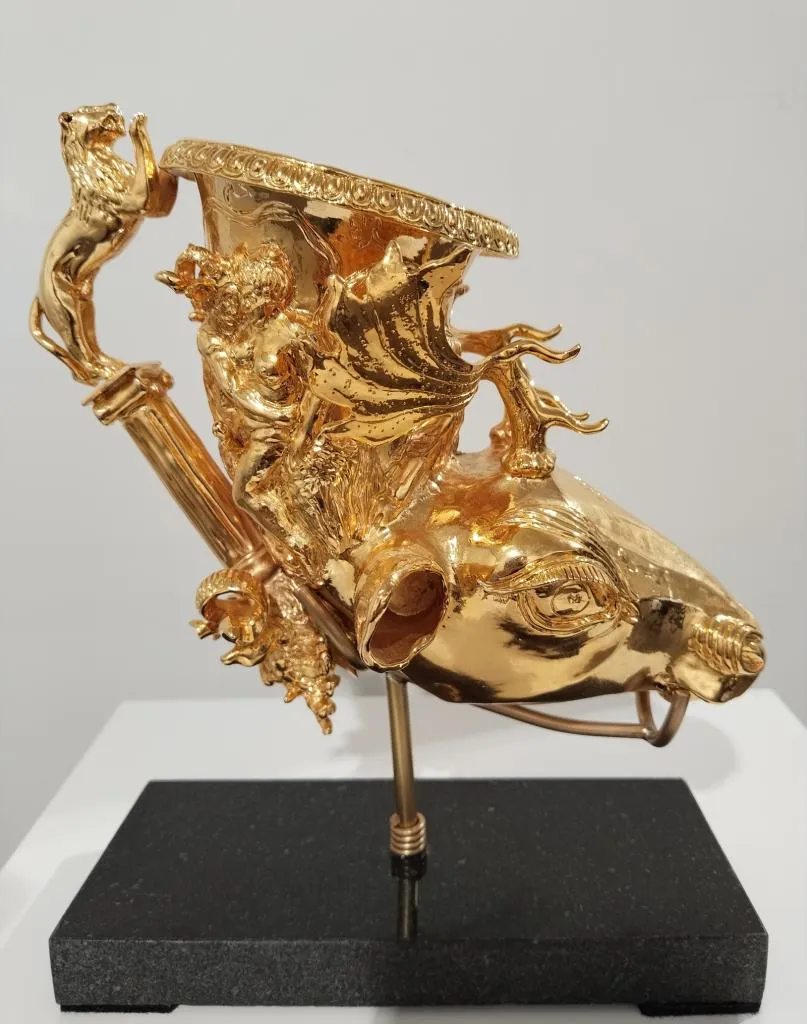
Source: by Stable MARK - own work.
What Are Famous Examples of Rhytons?
Several iconic rhytons stand out:
- Bull’s-Head Rhyton from Knossos (Crete) – carved from steatite with gilded horns
- Persian Gold and Silver Rhyta – found at sites like Persepolis
- Silver Centaur Rhyton Fragment – from Hellenistic Falerii, Italy
- Boar and Ram Rhyta – often Roman or Hellenistic in origin
- Proto-Elamite Cow-Woman Rhyton – one of the earliest known, from 3rd millennium BC Susa
What Is “Rhyton” in Ancient Greek (Spelling/Pronunciation)?
In Ancient Greek, the word is spelled ῥυτόν (rhy̆tón or rhŭtón). It’s pronounced /ˈraɪ.tɒn/ or /ˈraɪ.tən/ in English.
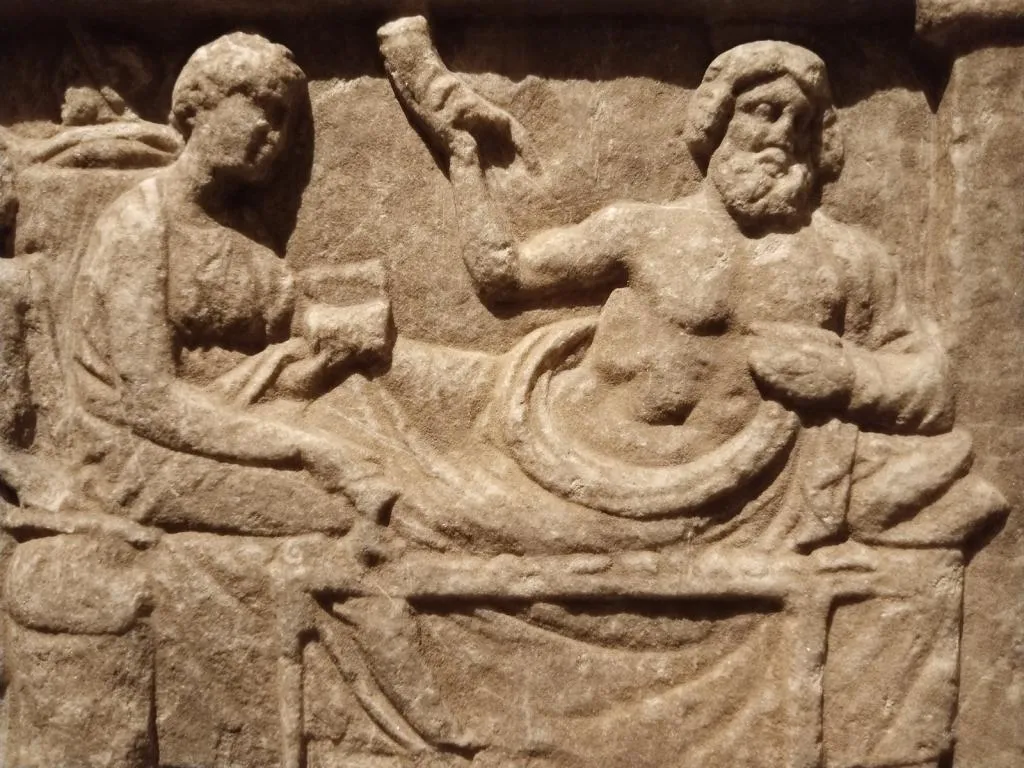
Source: by Stable MARK - own work.
What’s the Plural of “Rhyton”? Is It “Rhyta”?
Yes. In English, both "rhytons" and the Greek-derived "rhyta" are accepted plurals. Scholars often prefer “rhyta” in academic writing, while “rhytons” is more common in general use.
Is “Rython” Just a Variant or Misspelling of “Rhyton”?
Correct. “Rython” is a misspelling or rare variant of “rhyton.” The proper form, based on the Greek etymology, is rhyton.
What Do You Call the Traditional Drinking Vessel Shaped Like an Animal or Human Head?
That’s a rhyton—specifically a zoomorphic (animal-shaped) or anthropomorphic (human-shaped) rhyton. These were designed to look like creatures drinking when filled and poured, blending utility with dramatic visual effect.
What Was the Bull’s-Head Rhyton, and How Was It Probably Used?
The bull’s-head rhyton is one of the most famous ritual vessels in the ancient world. Common in Minoan Crete and later Greek contexts, it was filled from the top and poured out through the bull’s mouth. Some had holes at the snout, others at the base. These vessels were likely used in:
- Libation rituals (pouring wine or blood as offerings)
- Feasts honoring the dead or gods
- Elite banquets or royal ceremonies
Due to their size and weight—up to 6 kg when full—they often required two hands or teamwork to manage. The form itself, rich in symbolism, reinforced the connection between man, nature, and the divine.
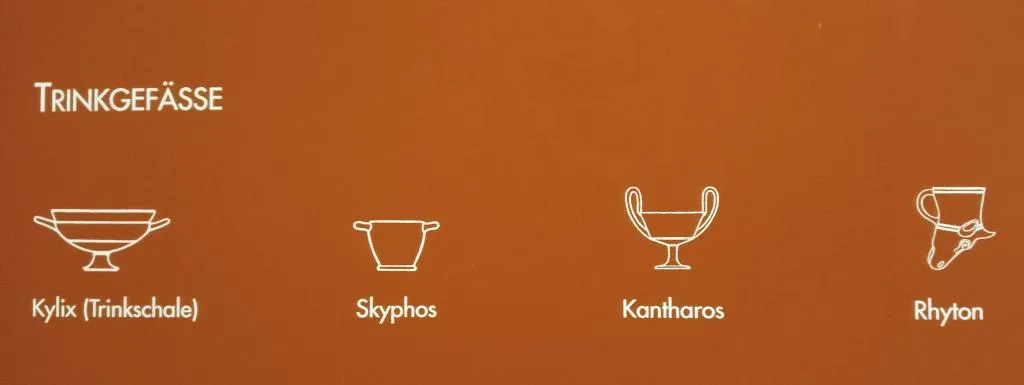
Source: by Stable MARK - own work.
While the Kylix, Skyphos, and Kantharos were primarily used for drinking wine, the rhyton often played a more ceremonial role in libations and sacrificial rites.
Share this article


















